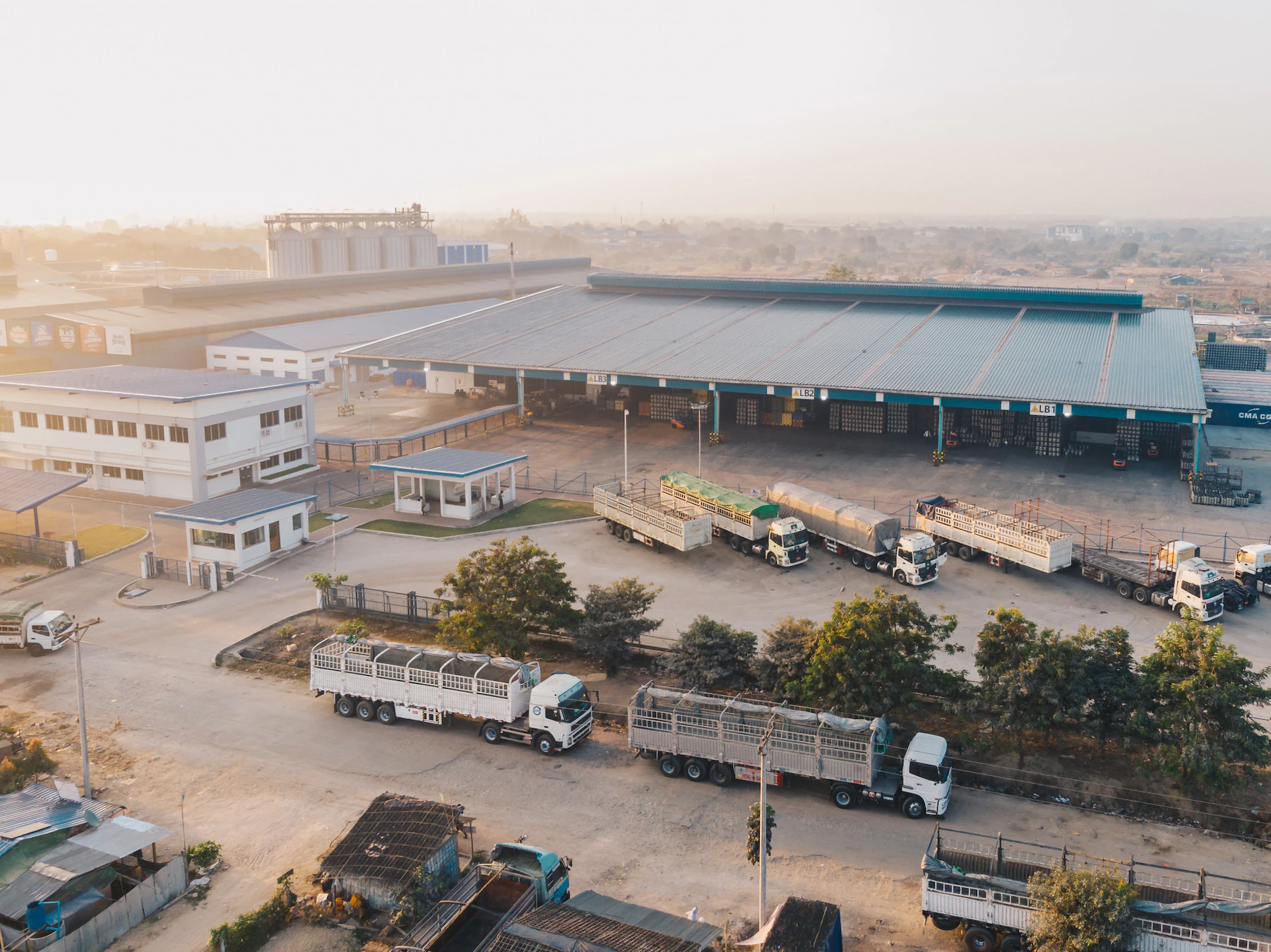Without any doubt, eCommerce has become one of the fastest-developing branches today. Together with it the need for quality logistics has also grown.
Since the 1970s there have been a lot of changes. As a result, currently, logistics isn't only about direct goods deliveries, but it offers a broad range of services to a wide variety of customers.
Nevertheless, the users are also more demanding and want to take everything out of the consuming experience.
The issue of creating a strong eCommerce value chain is critical and worth considering as it will gain consumers’ loyalty and establish long-term business relations.
In this article, we will focus on it and learn how to put today's logistics on a new level. It becomes achievable if all stages in the value chain processes get through deep analysis. So, let's delve into this topic.
What is a value chain?
According to the value chain concept it is often used to describe the whole action plan that is done during product creation. It involves not only the item itself but also the process that ends up only when customers finally receive the item.
The process of the value chain has primary and secondary activities. Both of them include several steps that should be done to the product to achieve its main goal - satisfy the buyers.

When it comes to primary activities, they usually include the following five steps:
1. Inbound logistics. This usually refers to interacting with suppliers, receiving the needed things, and storing them.
2. Operations. As you have gathered all the necessary items you can come to the next phase of operations. During it, everything is done to bring the product to the final ready-to-order stage.
3. Outbound logistics. This one is in charge of transferring processes. Precise attention in this phase should be paid to the product storage in a warehouse and the transport that is used for delivery to retail stores.
4. Sales and marketing. A deep target audience research should be done to pick marketing activities that will attract potential clients. According to the marketing strategy itself, it should be focused on showing how actual products can cover people's needs. On this point, some money can be wasted. However, in the case of providing professional research of the clients' problems that will be solved thanks to the item you sell, it will be easier to create an advertisement company.
5. Service. Being quite underrated it remains crucial and influences future purchasing decisions. This stage includes the activities that the company does to support and assist its customers after they have bought something. It can be discounts, repairs, or warranties.

Now let’s come to no less important activities that are called secondary. They involve the next four phases:
1. Procurement. It is usually done simultaneously with the inbound logistics stage. However, this one is delving more into interpersonal communication such as building strong relationships with suppliers, price negotiations, and paying.
2. Infrastructure. Without this element, all the primary activities won't be as powerful as needed. Being one of the most essential phases in e-commerce supply chain management it allows the company to operate and carry out its activities. Depending on the business size it can include not only administration and IT but accounting, and human resources departments as well.
3. Technological development. This phase often goes in hand with the primary operation activity. It is responsible for the quality and modern implementation of converting the materials into ready-to-sell products. As technological development concentrates on computer systems, software and telecommunications it contributes to the value chain by providing the best technical experience that is possible.
4. HR management. The fourth section in value chain management includes hiring employees, training them, and delegating tasks. During this point, people usually learn the specifics of the company and cooperation.

As you can see, value chain logistics involves several activities that should be controlled in order to achieve high results. That’s why revising work and doing a value chain analysis are two essential points.
The way how to conduct a value chain analysis is up to you. The sure thing is that without it the high-quality logistics process is impossible to achieve. That's why you need to follow the next step-by-step plan for customer value chain analysis:
1. Figure out each delivery point
Every eCommerce supply chain management starts by looking at each little step that is done in the logistics process. Here it is highly important to make a thorough analysis, anticipate the problems that may arise, and find possible solutions.
2. Calculate the cost of each value chain activity
After writing a clear logistic plan, you should find out how much you spend during each process point. It's a complicated task as each time the final amount might differ, however, if you don't know even the approximate cost, you are likely to spend more.
When you determine the true cost of each logistics value chain, you should take into consideration both actual and perceived costs. By doing it you might even notice some unnecessary steps where you waste money.
3. Identify how customers perceive the value and what is important to them
If you understand the customers and their purchasing behaviour, it will be easier to meet their needs and as a result, get loyalty.
Apart from creating a precise portrait of the target audience, it's also necessary to collect your customers' data. The best thing to do is to conduct different surveys focused on the issues that you find critical.
Before doing it pay attention to the listed questions and make sure that they are open-ended and won't take much time to answer.
4. Analyse competitor's logistics value chain
Once you have set everything in your eCommerce value chain, it's time to look at the one your competitors have. But how can you take a look at their value chain processes without examining the inside core? Unfortunately, we can only see their outside, but that is still worth taking into consideration.
One more thing that you can do is use the help of professional consultants. They are likely to work with a wide range of clients and can give you valuable advice in value chain logistics.

Evolution of E-commerce logistics
Taking a look at the modern e-commerce logistics system we may notice that companies have understood the importance of it. They start to invest money in advanced technologies such as artificial intelligence to increase customers' loyalty and avoid transportation problems. But was it always so? Let's take a look at the evolution of e-commerce logistics.
Direct replenishment (the 1970s). During the 1970s deliveries were made directly from suppliers or wholesalers.
Rationalisation (the 1980s). As large retail chains started to grow and expand, the logistics system also changed. At this point, the distribution centres were built and used as warehouses. There the offered goods were stored.
Global sourcing (the 1990s). The next essential phase involved an increasing demand for overseas suppliers that also meant long-distant transportation. As the imports were mainly centralised, more and more import centres started to appear near port facilities.
E-commerce (the 2000s). With the active start of using the Internet, web-based retail sales became quite popular. The majority of online retail purchases are shipped in parcels which increases the need for e-fulfillment centres. The goods storage there is beneficial for all types of business as it is no longer necessary to have a physical place to store all products. Thanks to fulfillment centres inventory management nowadays is easier than it was a few decades ago and store owners have more time to focus on other fields of their business.

Evolution of e-commerce logistics setup in developed markets
The general impression of the stuff bought in the shop differs from the one that was purchased online. The thing is when people use shipping services they mark not only the ordered product but also the delivery speed and quality. It's human nature that we are quite impatient and eager to get what we want as soon as possible. There are four types of logistics set up in developed markets.
-
Mega Fulfillment centres in e-commerce logistics
These are huge warehouses that can store hundreds of parcels and work round-the-clock, which allows delivery guys to pick up the items at any time. Thanks to them, individual products are shipped directly to the consumer.
-
The parcel hubs
You can find this type of logistic centres in quite a lot of areas of any city. They handle both domestic and international packages and are used for sorting parcels sticking to the area code. According to the delivery location, all orders are divided and loaded to the final destination.
-
The Delivery centres
These places are responsible for so-called last-mile deliveries. The product should reach the nearest customer's location, where it can be picked up.
-
The logistics aggregator
These kinds of virtual platforms are handy and irreplaceable for every business that has thousands of orders per month. At this point, communication management becomes more difficult and this is when the logistics aggregators come on stage. They help to cover the need for quick communication with courier partners through pre-existing contracts. The demand for it is significantly increasing mainly because of the benefits that logistics aggregators provide. They include better supply chain management e-commerce, customer satisfaction, and reduced costs.

Conclusion
As you can see over a few decades the logistics system has changed significantly from direct deliveries to ones using the newest artificial intelligence trends. Still, it is important to provide consumers with high-quality delivery to get their trust and long-term cooperation.
Thanks to SolidBrain specialists you will reduce transportation problems and take your business to a new level. As our software developers follow the newest technology trends, your company will be equipped with the best technical solutions, efficient route planning, strong integration capabilities, and overall top value chain logistics process.
Do you still have doubts? Just look at our case studies and contact us if you want to get professional help and be number one in your industry.



